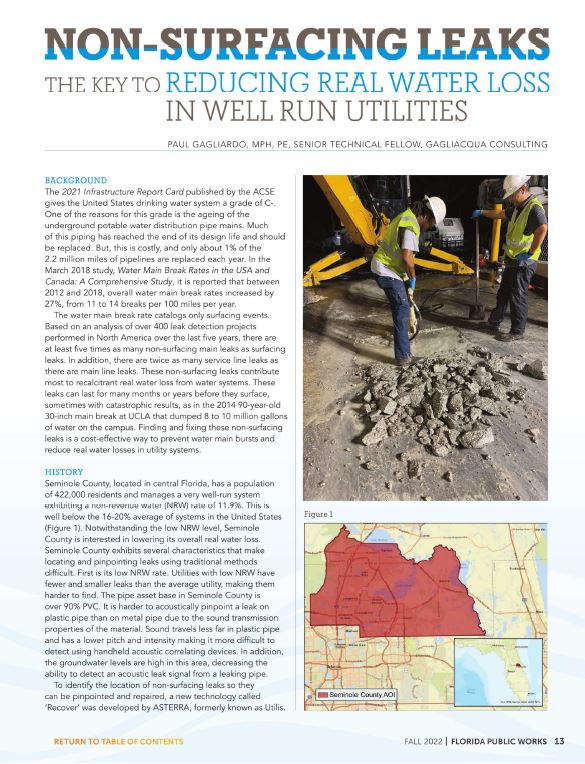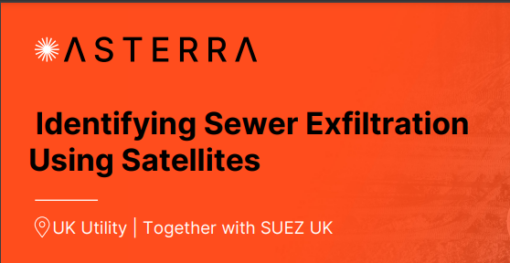SCROLL FOR MORE INFO

Seminole County which is located in central Florida has a population of 422,000 residents and manages a very well-run system exhibiting a non-revenue water (NRW) rate of 11.9 %. This is well below the 16 – 20 % average of systems in the United States. See Figure 1. Notwithstanding the low NRW level, Seminole County is interested in lowering its overall real water loss. Seminole County exhibits a number of characteristics that makes locating and pinpointing leaks, especially non-surfacing leaks, using traditional methods difficult.
First is its low NRW rate. Utilities with low NRW have less and smaller leaks than the average utility, making them harder to find. The pipe asset base in Seminole County is over 90 % PVC. It is harder to acoustically pinpoint a leak on plastic pipe than on metal pipe due to the sound transmission properties of the material. Sound travels less far in plastic pipe and has a lower pitch and intensity making it more difficult to detect using handheld acoustic correlating devices. In addition, the groundwater levels are high in this area decreasing the ability of detecting an acoustic leak signal from a leaking pipe.
To identify the location of non-surfacing leaks so they can be pinpointed and repaired, a new technology called Recover was developed by ASTERRA, formerly known as Utilis. Recover utilizes specialized RADAR signals from satellites to illuminate an area of interest and subsequently collects the resulting reflected signals. These signals are analyzed to identify specific indicators of wet soil saturated with potable water. The result is a GIS-based map showing Likely Leaking Locations (LLL). These results typically encompass 5 – 10 % of the entire system length, leading to lower time and resource costs for inspection compared to traditional walk-the-line random inspections.
A Recover satellite survey was performed for Seminole County in the winter of 2021 and the field inspection program was conducted in 2022. A total of 204 leaks were found in twenty-five crew days inspecting 52.2 miles of pipe. For the full case study, download below.
Download

